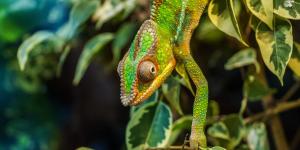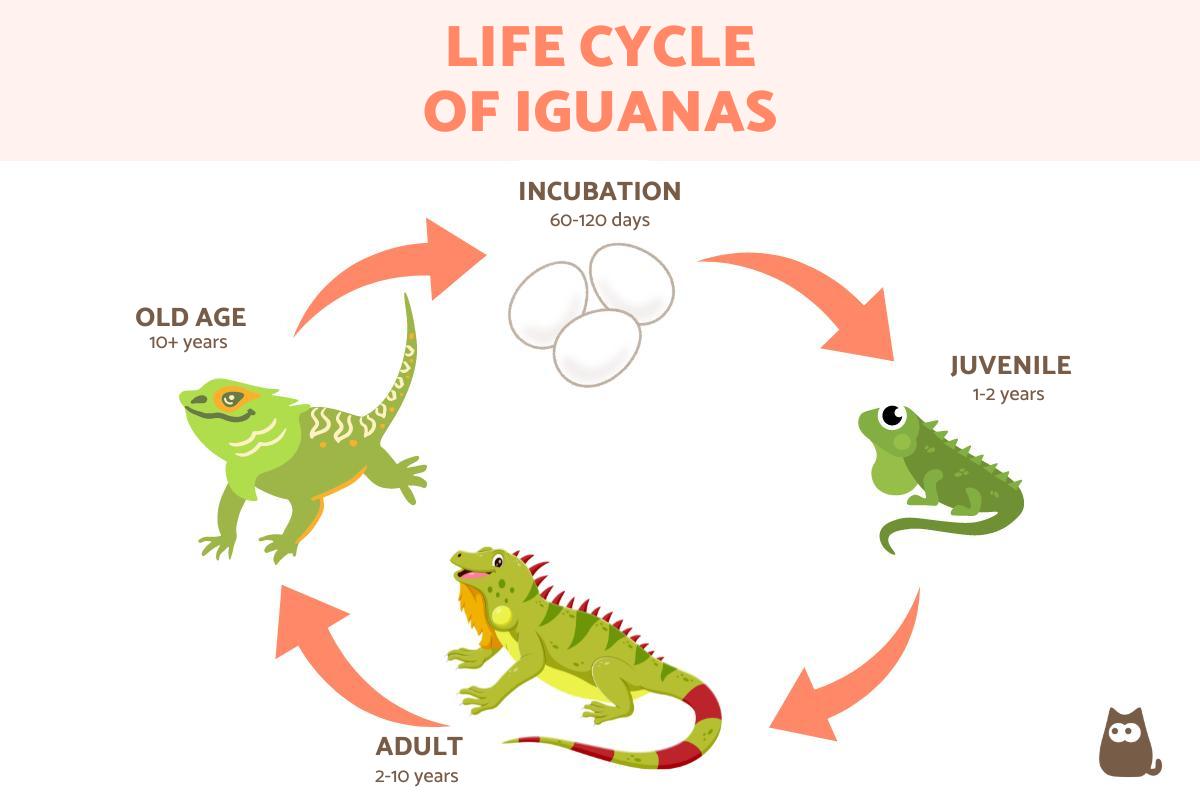How Long Do Iguanas Live in Captivity vs. the Wild?


Iguanas are a group of reptiles belonging to the Iguanidae family, in which there are more than 40 individual species of lizard. While there is a great diversity of iguana species with a wide-ranging population distribution, perhaps the most well-known the green iguana (Iguana iguana). Although it is not recommended since they are not a domestic animal, many people keep iguanas as pets. For this who do this, they might want to know how long do iguanas live in captivity vs. the wild? Iguana life expectancy in captivity and the wild differs according to various factors. We look at the longevity of iguanas and explore these factors in more detail.
Life cycle of the iguana
The life cycle of iguanas is similar to that of other reptiles. It is best divided into different stages which represent the important phases of iguana development:
- Incubation and birth: after mating, females look for a place on the ground to dig and bury the eggs. Incubation time varies between species, but generally ranges from 60 to 120 days. Egg laying does not always occur immediately after copulation. For example, it can take up to 65 days in green iguanas before the female deposits the eggs.
- Juveniles: after the incubation period, the newborn iguanas emerge from their shells, measuring between 6.7-9.8" (17-25 cm) and weighing around 12 g. If they are able to feed properly, they will have increased considerably in weight and size after a year.
- Adults: iguanas reach sexual maturity between 2 to 2 and a half years of age, with females generally maturing more quickly than males. Once they are adults, they can grow to more than 5 ft (1.5 m) and weigh between 8.8-1706 lb (4-8 kg). From adulthood onwards, their growth slows down.
- Old age: although the age at which they reach this stage varies according to the species, they are generally considered to be in old age from 10 years of life onwards. During this period, they are more vulnerable to diseases and physical health problems.
Discover the most common diseases in green iguanas with our related article.

How long do iguanas live in captivity?
Increasingly, iguanas are being kept as pets. The most common iguana species to be adopted is the green iguana (Iguana iguana). While it is possible for an iguana to live peacefully as a pet, in general we discourage this practice.
The first reason is that animals should be left alone in their natural habitat. As well as you can replicate their natural habitat in your home, this pales in comparison to the freedom of the wild.
Even if you are a good guardian for your iguana, they are not an animal that is easy to care for. They cost a lot of money in upkeep, such as expensive food and terrariums. By promoting iguanas as pets, you are encouraging people to do adopt these reptiles who are unable to do so adequately. We have already seen an big uptick in pet iguanas being released into the wild because owners cannot take care of them, resulting in invasive species populations.
It is true that iguanas in captivity generally have longer lives than wild iguanas. The reason for this is the lack of dangers which exist in their natural habitats. They have their food provided for them and they are not prey to larger animals. However, this does not mean their quality of life is improved. Without freedom, captive iguanas do not reach their full potential.
With this in mind, we look at how long iguanas live in captivity according to species:
- Green iguana (Iguana iguana): 20-25 years.
- Lesser Antillean iguana (Iguana delicatissima): 10-15 years.
- Desert iguana (Dipsosaurus dorsalis): 10-14 years.
- Rock iguanas (Cyclura spp.): over 40 years.
- Black iguana (Ctenosaura similis): up to 20 years.
- Galapagos land iguana (Conolophus subcristatus): 40-50 years.
- Marine iguana (Amblyrhynchus cristatus): up to 20 years.
If you find an abandoned young iguana, you may want to know what to feed a baby iguana to care for them until they can be rehabilitated and returned to the wild.
How long does an iguana live in the wild?
As we mentioned, iguanas in the wild tend to live shorter lives. This is because they are exposed to natural predators, such as birds of prey, snakes and felines, among others. They also do not always have access to sufficient food and water, something which drastically affects their longevity. When they get sick or are affected by parasites, the lack of treatment also has a negative impact on their life expectancy.
There is insufficient data on many types of iguana species and their life expectancy in the wild. Generally speaking, we believe the following is accurate:
- Green Iguana (Iguana iguana): 8-12 years.
- Desert iguana (Dipsosaurus dorsalis): 7-10 years.
- Rock iguanas (Cyclura spp.): 25-40 years.
- Galapagos land iguana (Conolophus subcristatus): 20-30 years.
You can learn more about how these lizards survive in their respective habitats by looking at our article on the diet of iguanas.

How long does an iguana live without eating?
Iguanas have a remarkable ability to survive without food for relatively long periods. This is largely due to their slow metabolism. However, this fasting cannot be indefinite. In situations of illness or stress, iguanas may stop feeding to save energy and focus on their recovery.
When an iguana is healthy, it can survive without food for one to two weeks. This length of time varies depending on the animal's particular condition and other factors such as weather patterns and access to water. After that time, they begin to show signs of malnutrition, which will eventually lead to death if they do not eat again.
If you have a pet iguana and notice that it suddenly stops eating, you should not wait more than a few days before going to a veterinarian. Specifically, you must visit a exotic animal veterinarian specializing in reptiles. This will help identify the cause of the lack of appetite or inability to eat. Acting quickly is essential to protect the animal's life.
Now you know about the life cycle of different iguana species, why not check out our article on where do iguanas live?
If you want to read similar articles to How Long Do Iguanas Live in Captivity vs. the Wild?, we recommend you visit our Facts about the animal kingdom category.
- Myers, P., Espinosa, R., Parr, C. S., Jones, T., Hammond, G. S., & Dewey, T. A. (2024). The Animal Diversity Web.
https://animaldiversity.org/search/?q=iguana&feature=INFORMATION - IUCN. (2024). IUCN Red List of Threatened Species. Version 2024-1.
https://www.iucnredlist.org







